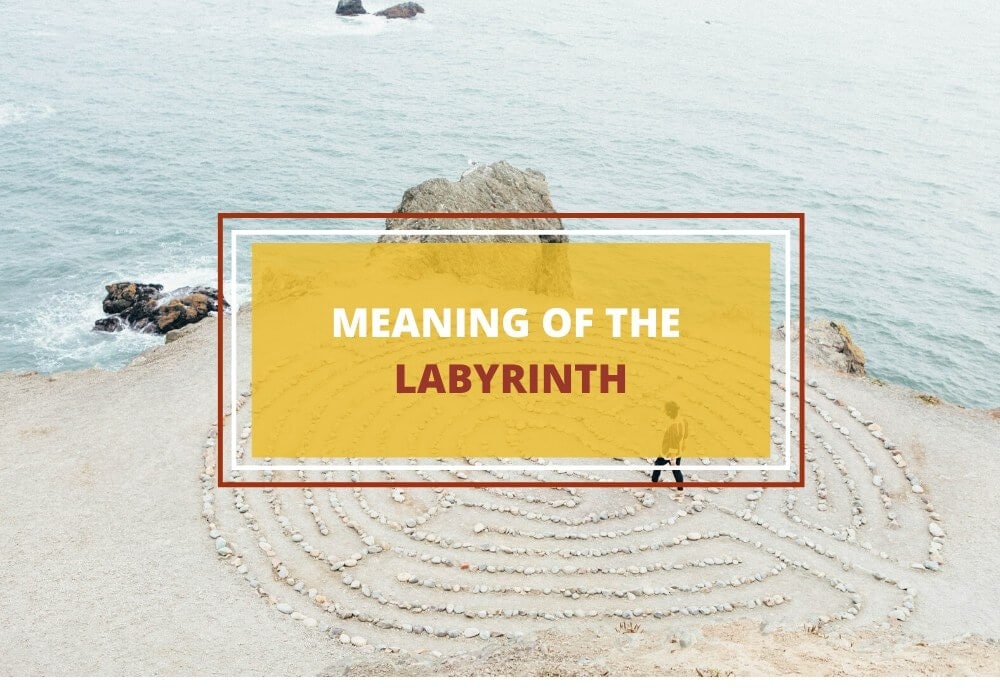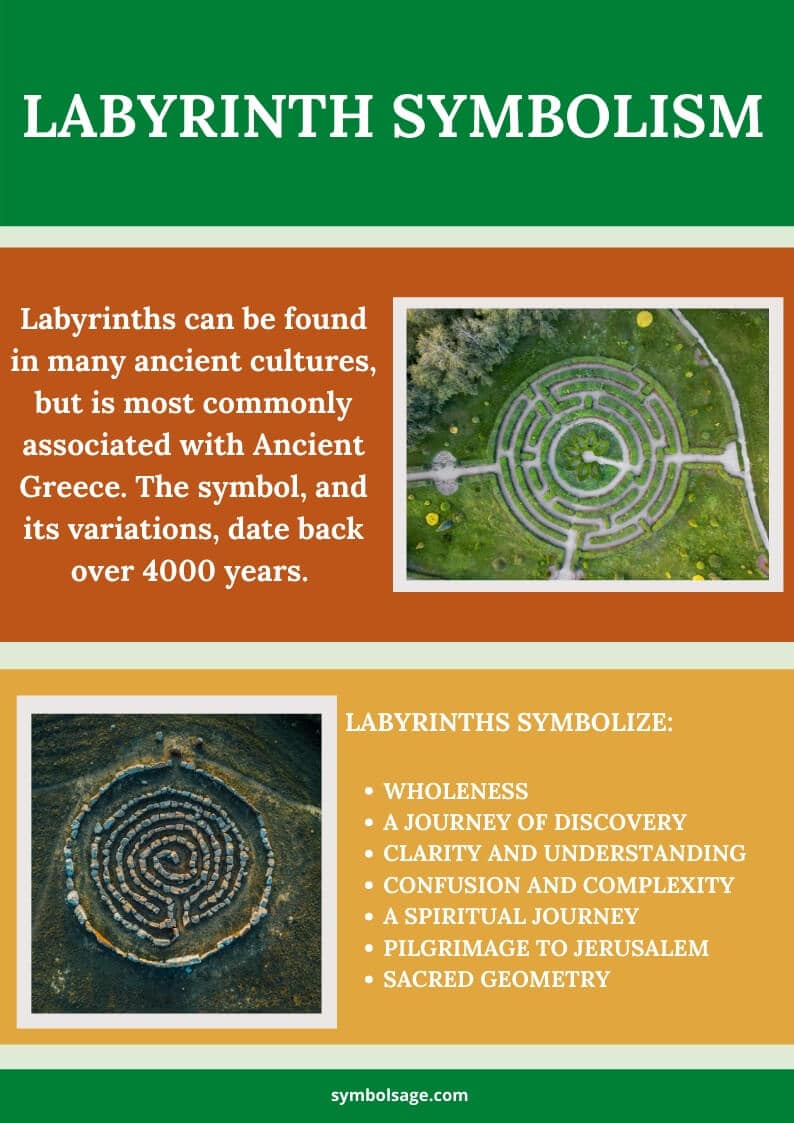
Table of Contents
The history of the labyrinth can be traced back over 4000 years. The ancient designs are complex, almost playful and yet highly meaningful.
Although the most popular legends relating to the labyrinth are connected to Ancient Greece, variations of the symbol appear in many other civilizations.
Over time, the labyrinth has acquired many symbolic meanings. Today, the labyrinth may symbolize confusion but also spiritual clarity.
Here’s a look at the origins, history and symbolic meaning of the labyrinth.
Legend of the Labyrinth
According to the Greek legend, the labyrinth was a highly complex maze designed and constructed by Daedalus as per the mandate of King Minos. The purpose of the labyrinth was to imprison the minotaur, a terrifying creature with the head and tail of a bull and the body of a man, who ate humans to nourish itself.
The story goes that the labyrinth was so confusing, even Daedalus himself could barely get out of it once he had constructed it. The minotaur lived in the labyrinth for a long period of time, and every year, seven youths were sent into the labyrinth as food for the minotaur. Finally, it was Theseus who successfully navigated the maze and killed the minotaur, with the help of a ball of thread to retrace his steps.
History of the Labyrinth
Archaeologists have been looking for the site of Daedalus’ labyrinth for a long time and have found some potential sites. Possibly the most well-known is the Bronze Age site at Knossos, Crete (called Europe’s oldest city) which is extremely complex in its design that some historians believe it to be the site of Daedalus’ labyrinth.
However, the word labyrinth could be more general, referring to any maze-like structure and not a specific building. Herodotus mentions a labyrinthine building in Egypt, while Pliny describes a complex underground maze beneath the tomb of King Lars Porsena. There are references to labyrinthine mazes outside of Europe as well, such as in India, Native America and Russia.
The path of a labyrinth may have been used to capture evil spirits. Some theorize that they were used for rituals and dances.
The Labyrinth Symbol
The symbol of the labyrinth is somewhat different to its possible architectural design, with many variations existing. The widely accepted symbol of the labyrinth features a circuitous path with a starting point that leads to the center.
There are two types of labyrinths:
- A maze which has dividing paths, with the wrong path leading to a dead end. This type can be frustrating to walk through, as finding one’s way to the center and back out again depends largely on luck and vigilance.
- A meander which is a single path that leads one through a winding manner to the center. This type of maze doesn’t require much effort, as eventually one will find one’s way to the center. The most popular meander labyrinth is the Cretan labyrinth design, featuring a classic seven-course design.

Classic Cretan Design
Roman designs typically feature four of these Cretan labyrinths, combined into a larger, more complex pattern. While round labyrinths are the best-known versions, square patterns exist as well.
Symbolic Meaning of Labyrinth
Today the labyrinth symbol holds many meanings. Here are some of the concepts associated with them.
- Wholeness – achieved by the meandering walk to the center, completing the pattern.
- A journey of discovery – as you walk the labyrinth, you’re constantly seeing different perspectives and directions.
- Clarity and understanding – many people walk around the path of a labyrinth to achieve a thoughtful, ponderous state leading to clarity and discovery. The pattern also symbolizes finding the solution to a problem and achieving understanding.
- Confusion – ironically, the very word labyrinth is often used to illustrate confusion and complexity. As such, the symbol of the labyrinth can represent an enigma, a puzzle and confusion.
- Spiritual journey – some view the labyrinth as a metaphor for a spiritual journey, with the entrance representing birth and the center symbolizing God, knowing or enlightenment. Getting to the center requires a long, arduous journey of growth.
- A pilgrimage – during the Middle Ages, walking a labyrinth was often likened to going on a pilgrimage to the Holy Land, Jerusalem. As many people could not make the journey to the Middle East, this was a safer, more achievable substitute.
- Sacred geometry – labyrinth designs incorporate sacred geometry.
Labyrinth in Use Today
Labyrinths, in the form of mazes, still remain popular as a form of entertainment. The challenge is for a person to enter the maze and to find the center and their way back out.
Apart from these physical labyrinths, the symbol is sometimes used as a decorative motif in jewelry, on clothing and other retail items.
In Brief
The labyrinth remains a somewhat enigmatic symbol, representing spiritual discovery, understanding and complexity. Although it’s over 4000 years old, it still remains relevant and meaningful in today’s society.









